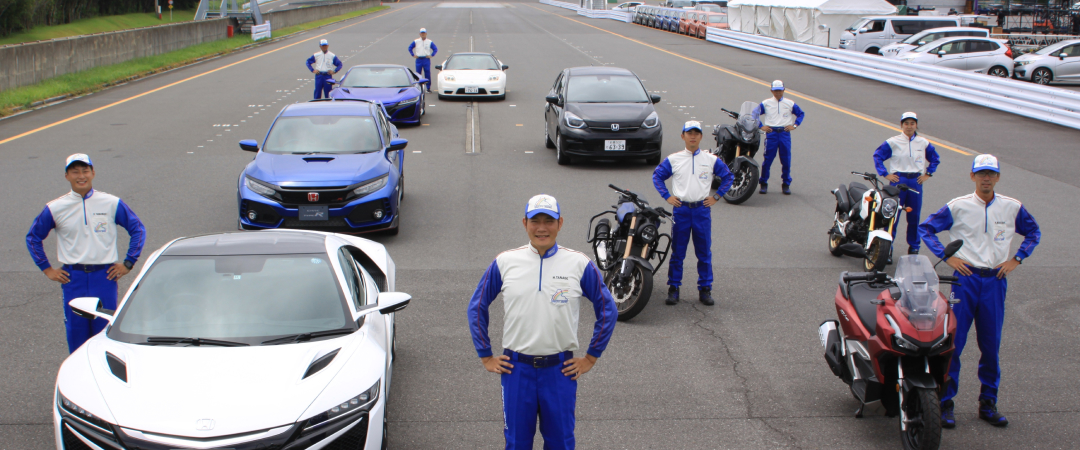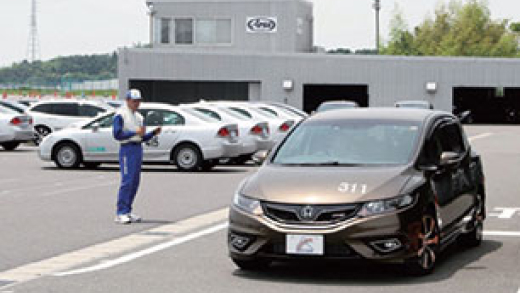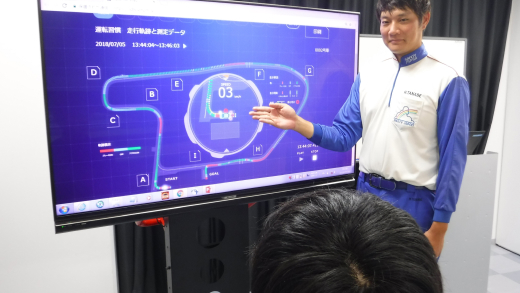Traffic Safety Education by the World Leaders in Traffic Safety

Hayato Tanabe | Chief Instructor, Suzuka Circuit Traffic Education Center, Honda Mobilityland Corporation
Honda started its safety driving promotion activities in Japan in 1970.
These activities act as a template for other regions in the future, and new approaches are continuously being introduced in response to changes in the environment and the times.
Hayato Tanabe, chief instructor for the Suzuka Circuit Traffic Education Center, Honda Mobilityland Corporation, describes the latest activities in Japan.
Initiatives Focus on Conviction, Not Persuasion
Based on the concept of experiencing the feeling of danger in a safety environment, Honda has promoted safety driving training for corporate and individual customers using actual motorcycles and automobiles at its Traffic Education Center. The emphasis is on convincing, rather than persuading, the trainees, as even if instructors can persuade trainees, they will not change their behavior to become safety drivers, and the concepts will not take root in their minds. It is vital for the trainees to realize for themselves, and be convinced, of the importance of driving safety.
Developing Traffic Safety Education Content and Driving Evaluation System
To promote awareness by the trainees, highlighting how the trainee drives and present the objective facts to them is effective. To this end, the Center developed traffic safety education content, the Driving Habit Check Program, and the DTM (Driving Technique Measure) system for measuring driving behavior in 2008, which acts as the basis for developing new programs.
Trainees first evaluate their own driving through the Driving Habits Check Program, and drive a DTM-equipped vehicle on a pre-defined course. The DTM uses in-vehicle measuring equipment and GPS to acquire objective data on driving and vehicle behavior. By comparing the results of the check program and DTM, the trainee is able to notice problems in their own driving, resulting in highly convincing training.
In 2017, in addition to measuring driving and vehicle behavior, the Center developed and further advanced DSP (Driving Style Proposal), a system for analyzing driving data. DSP is characterized by real-time data collection, analysis of accumulated driving data, and high scalability to respond to the historical background and customer needs. One of the DSPs that take advantage of these feature is Driver Concentration Testing, which measures how well the driver concentrates. In recent years, traffic accidents caused by drivers being distracted by car navigation systems and smartphones have risen, but other causes, such as being lost in thought or talking with passengers, also need to be understood. By trainees becoming aware, and convinced of these dangers, the Center believes they will become safer drivers.
DSP provides a solid foundation to reflect on daily driving, but the program is currently limited to the Traffic Education Center at the Suzuka Circuit. In the future, Honda plans on increasing the versatility of the DSP, and expanding the venues so that more people can be trained.
-

Driving a DSP-equipped car -

Self-evaluation screen
Pursuing the 2050 Goal of Zero Traffic Fatalities Involving Honda Motorcycles and Automobiles
For more than half a century, Honda has trained people involved in traffic safety education, and developed and spread various educational materials, equipment and programs. In its activities to date, Honda has not only taught prople the basics of driving, including recognition, prediction, judgment, and operation, but also emphasized the importance of encouraging awareness as a traffic participant, including consideration for other participants. Honda believes that this will become even more important as it works toward the difficult goal of zero traffic accident fatalities.
The programs introduced here are designed to achieve a future where drivers have mutual respect. Honda will continue to enhance the program’s content and strive to expand traffic safety education throughout Japan and the world.

HAYATO TANABEHonda Mobilityland Corporation
Chief Instructor, Suzuka Circuit Traffic Education Center. Tanabe also runs safety schools for drivers and riders, and teaches safety driving to companies with professional drivers. He also proposes traffic accident avoidance initiatives to companies.